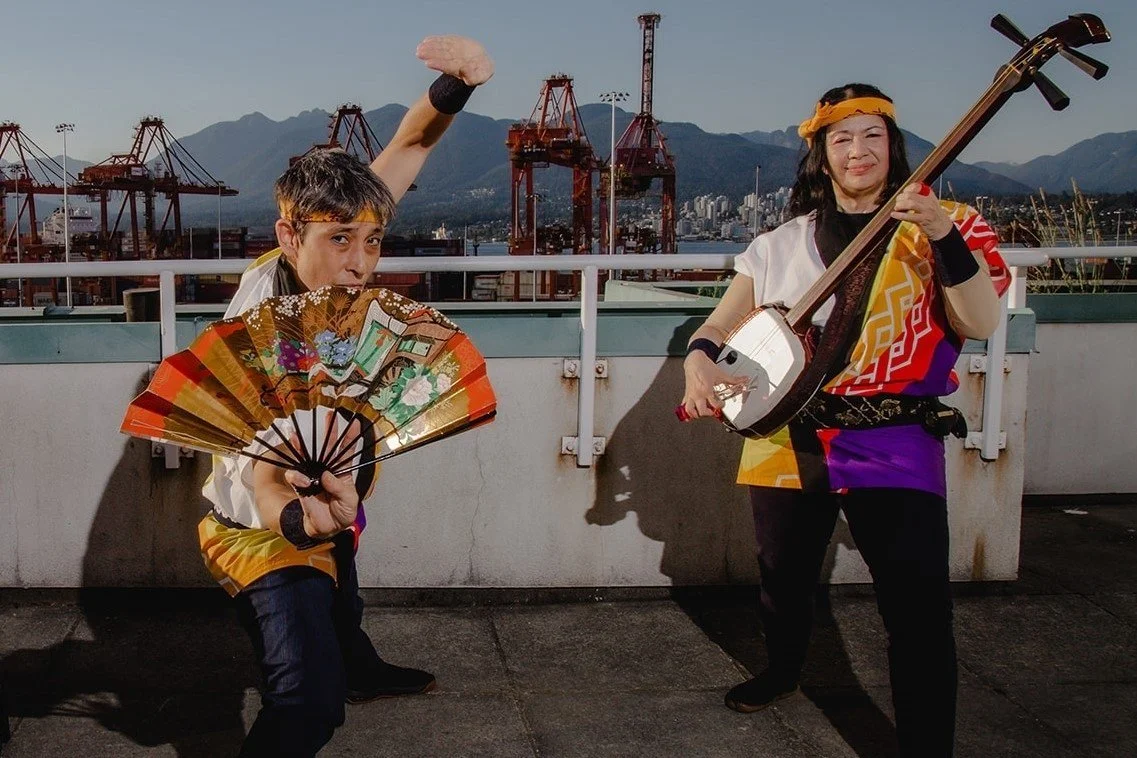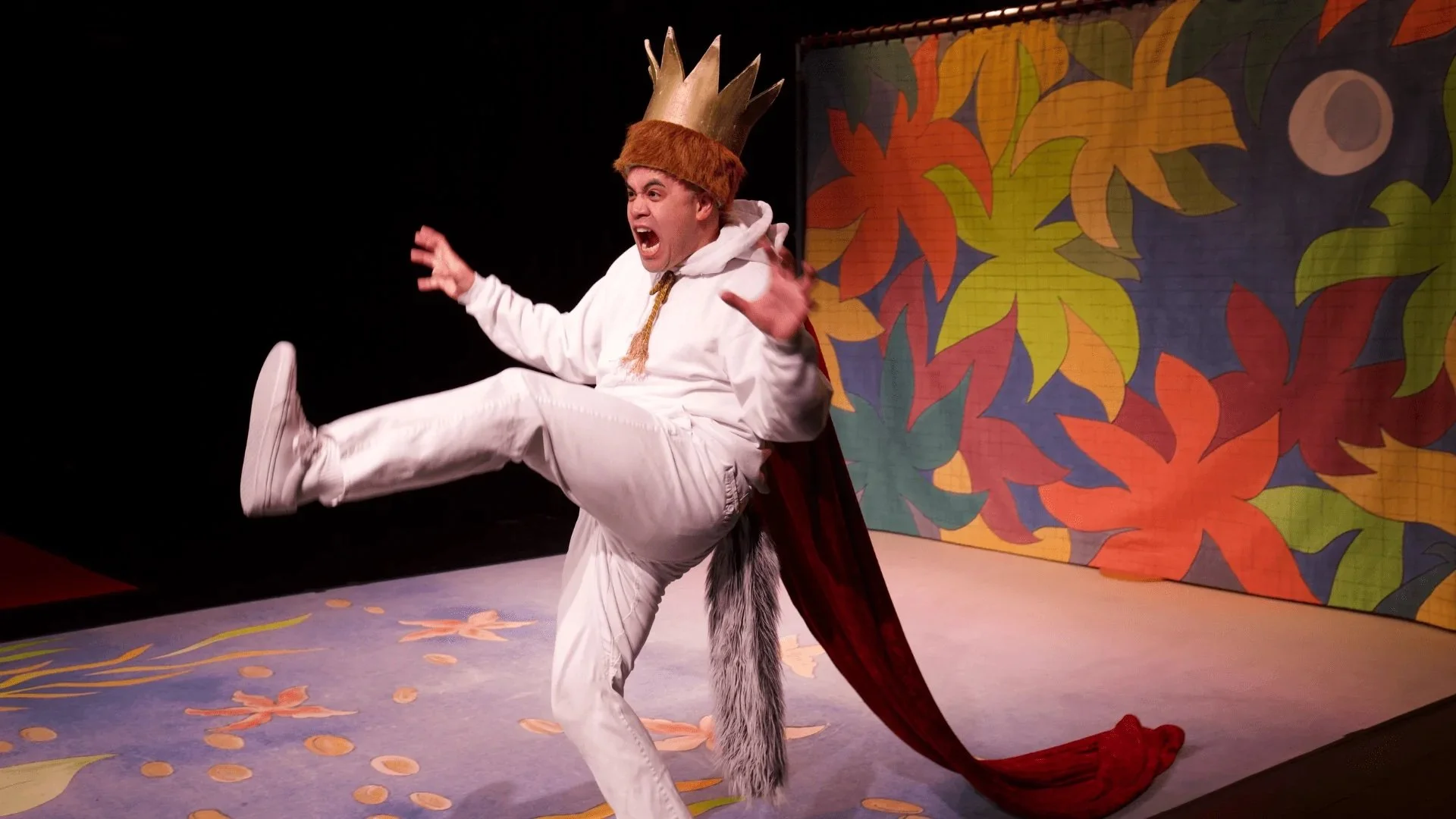At Vancouver’s PuSh Festival, interdisciplinary artist Émilie Monnet shares Indigenous cultural significance of the beaver
For the founder of Onishka Productions, who is of Anishinaabe-Algonquin and French heritage, the immersive Okinum started as a vivid dream
Okinum. Photo by Clark Ferguson
PuSh Festival presents Okinum at the Anvil Theatre on February 2 and 3 at 7:30 and online from February 2 to 5; post-show talkback takes place February 2
OVER A MILLION years ago, giant beavers roamed the Earth. They we're among the largest rodents ever to exist. Much more recently, the extinct animal has visited Émilie Monnet in her dreams.
Based in Tiohtià:ke/Mooniyaang/Montréal, Monnet, who is of Anishinaabe-Algonquin and French heritage, is the founder of Onishka Productions. The interdisciplinary arts company takes its name from the Anishinaabemowin term meaning wake up . In an interview with Stir, Monnet recalls just how vivid her nighttime visions of the giant beaver have been.
“Basically, a beaver the size of a bear comes in and visits me,” Monnet says by phone. “It’s carrying a little bag, and it speaks some words to me. I have dreamt it three times over more than 10 years. I really wanted to decipher this dream and understand what the words are and what the dream means.”
To achieve a deeper sense of the significance of her reverie, Monnet created Okinum, the work’s title being the Anishinaabemowin word for dam. While making the theatrical production, she learned that the symbolism of the beaver is deeply rooted in the Anishinaabe worldview. Monnet also drew several connections between the creature and the modern world in her research and creative process for Okinum, which is the first work she has both written and performed in herself—and which is being featured at the 2023 PuSh Festival.
Emilie Monnet. Photo by Claudia Chan Tak
Aside from industriousness, the beaver represents wisdom; the animal builds worlds and affirms life. Prior to contact with white settlers, beavers were abundant. They were rendered nearly extinct, however, due to the fur trade, killed for their pelts to be made into felt hats and other pieces of clothing coveted by Europeans.
“With the overkilling of beavers, humans’ relationship with Beaver was not honoured,” Monnet says. “I found an analogy there with what has happened to Indigenous bodies, specifically women. The word beaver indicates the female sexual organs….The commodification of pelts to sustain fashion in Europe is a juxtaposition of Indigenous women’s bodies that are also trafficked or taken advantage of.
“The piece became a poetic metaphor for me to address these questions of how colonization has also suppressed women’s voices, how different government policies have, with each generation, assimilated mothers and grandmothers,” she adds. “It became a gateway to speak about connections between beavers and colonization.”
Combining theater, sound, and video in a nonlinear series of dreamlike tableaus, Okinum is an immersive experience presented in three languages: French, Anishinaabemowin, and English. Sound designer Jackie Gallant creates the aural component live, a world filled with things you might hear in nature, Monnet says, “sounds of the land”.
A metaphor of dams as internal blockages is also reflected in the performance, Monnet explains: “What is the journey to remove these pieces of wood, of trees, so that the water of memories can flow?”
Monnet formed Onishka in 2011 to forge relationships with and connect Indigenous artists, regardless of their genre, across Turtle Island and beyond. Since 2016, she has presented Indigenous Contemporary Scene/Scène contemporaine autochtone, a nomadic platform for the dissemination of Indigenous performing arts. Currently artist in residence at the Espace Go theatre, Monnet held a three-year residency at the Centre du Théâtre d’Aujourd’hui.
Working on Okinum, she says, has brought her closer to her culture. She has been learning the Anishinaabemowin language, having presented Okinum as a podcast during the pandemic.










![Theatre review: Complete Works of William Shakespeare (abridged) [revised] [again] takes pleasingly panicked tour of the Bard’s canon](https://images.squarespace-cdn.com/content/v1/5f10a7f0e4041a480cbbf0be/1752776963817-BS2BYYQMLMSGU9OG3E37/Nathan-Kay-and-Craig-Erickson.-Photo-By-Tim-Matheson.jpg)



